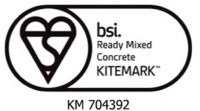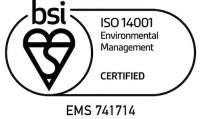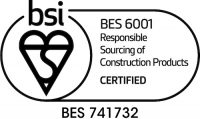Screed is a thin layer of specialist concrete which is poured over a concrete floor base (or even over underfloor heating) to create a smooth, level surface that can accommodate the final floor covering such as carpet or tile.
Most screeds are made from cement and sharp sand, for a fine screed, or cement and a more coarse 6-10mm aggregate for heavy duty or industrial screed.
Yes. the main four different types of screed are below, although screeds can be tailor made using a range of admixtures to provide different qualities.
- Bonded screed is fully bonded to the prepared concrete sub-base using a specialist bonding agent or primer. Often applied when thinner screeds are needed.
- Unbonded screeds are laid onto a damp proof membrane or polythene sheeting, which separates the final layer of screed from the the concrete base substrate. Often applied to older concrete sub-bases.
- Floating screed is laid on to a layer of thermal insulation, which is usually on top of a damp proof membrane that separates the existing concrete sub-base.
- Underfloor heating screed is essentially the same as floating screed, but it is laid over underfloor heating pipes instead of insulating material.
Screed is used to level out a concrete sub base. It provides a smooth and even finish that is better for laying flooring, such as carpet or tile. It can also be used to cover insulation or underfloor heating pipes, offering a thermally efficient solution.
Screeding is important to give a smooth and even surface to a sub base that could be uneven and unsafe. Generally, the level of a floor surface should not vary by more than 5mm over the space of 3 metres, and a correctly laid screed can ensure this.
Yes - the main purpose of screed is to pour it over a concrete sub floor.
Both concrete and screed are made up of cement, aggregate and water, but screed is a smoother, more free-flowing mixture made with finer aggregate. Concrete on the other hand is much coarser, with more hard-core aggregates. The extra aggregate in concrete gives it additional strength and durability.
Different types and thicknesses of screed will take different lengths of time to dry or cure. It should be left at least 24 to 48 hours before it is walked on, although with certain additives this time could be reduced to 12 hours. For heavier traffic, to have a floor covering laid on top or to move furniture and tools across it, it’s best to leave it at least 5 to 7 days. Most screeds will reach their fully cured strength after 28 days, so for best results, it's best to wait until then to use the screeded surface.
Screed should be left for at least 24 to 48 hours before it is walked on. This time can be reduced with certain additives, however it’s always best to consult your builder before walking on the screed to ensure you don't damage it.
As screeds (and all cement-based products) can shrink as they dry or cure, it’s essential you allow it to fully cure before laying tiles. This can take up to 28 days, so for best results, it's best to wait until then to lay the final floor covering. However, you can speak to your builder about additives that can be used to reduce this time.
Yes. Screed can be used in domestic properties, as well as commercial and even industrial premises. If the screed will be subjected to heavy duty applications, the mixture can be adapted to withstand the additional weight and traffic.
Floor screed should be poured directly into the required location and a straight-edge wooden float can be used to level it. Firstly find four level points, and then pull the float across the surface using the level points as the guides.
Self-levelling floor screeds can also be used; these have a more free-flowing consistency.
Technically no, but while screed is curing it is essential it maintains a certain amount of moisture to ensure the it reaches its full strength. If the screed is laid in direct sunlight or extreme heat, it should be protected with a tarpaulin or plastic sheeting to prevent it drying out too soon.
Floor screed can be poured in both wet or cold weather, so long as the outdoor temperature remains above 3°C, although you will need to take some precautions to ensure the best results. As most screed is laid indoors, these precautions usually involve taking extra care when transporting and storing materials, ensuring the area is watertight and ensuring the screed has time to completely cure before being used. EasyMix Concrete will deliver your screed outside of your site, and on very hot days this will cause the curing speed to increase.
Traditional screeds are not self-levelling, however many modern screeds can be self-levelling. They are ideal for larger areas - ask your screed supplier to find out more.
Yes. Many people chose to cover screed with a huge range of floor covering, from carpet to tiles, but in commercial environments it is often more cost effective to leave it exposed.
Also, a modern interior design trend for industrial-style minimalism has lead many homeowners to choose screed as the final floor finish.
Yes. Screed is the ideal flooring solution for underfloor heating; the screed protects the heating system and retains the heat for longer making it more economical to use.
Screed isn’t essential for laying paving, but it does offer some great additional benefits, such as a tidier site and less time and manpower. A simple retarder in the mixture will keep it workable all day so you can simply lay your paving slabs on top.
Screed should not require ongoing maintenance or care. So long as it is laid correctly, the screed shouldn’t present any future flaws or faults.
There’s very little difference between ready-mixed or on-site mixed screed, but they each have their own advantages.
On-site mixed screed offer greater flexibility, and with the expert assistance of a screed supplier on hand to do the mixing, they can adapt the mixture as required to suit your needs.
Yes. Without screed it will be extremely difficult to get a concrete floor level enough for a floor covering.
The minimum thickness at which you can lay your screed will depend on the type of screed and your application. Some heavy duty applications will require much thicker concrete to ensure its strength - it’s always best to check with your builder before you order.
- Bonded screed thickness: minimum 25mm approx.
- Unbonded screeds thickness: minimum 50mm approx.
- Floating screed thickness: minimum 65mm approx.
- Underfloor heating screed thickness: minimum 65mm approx.
For applications that will experience heavy use, such as in a garage where a vehicle will be parked, or on underfloor heating, a floating screed with a minimum thickness of about 65mm is usually best. However, every application is different and it is always recommended that you consult your builder or a professional screeder to ensure you get the right solution.
To find out how much screed you need to order, simply use our concrete calculator and give the team at EasyMix a call to place your order.
Screed mixtures can be tailored to offer acoustic insulation. Speak to a specialist to find out more.
Screed can be used outdoors, although most people prefer to use concrete as it is easier to install and offers enhanced strength and durability. That said, a screed can make jobs like outdoor paving much easier.
If the concrete floor is in good condition and just a bit uneven, screed can be the ideal solution to level it out if installed correctly. However, if the floor is very uneven or damaged, it is always best to take it up and relay it for the best results.
Screed can be pumped directly to the required location using a specialist screed pump, although at EasyMix we currently only offer traditional chute delivery.
Wondering how much you screed will cost? You can find out more about the price of screed on our screed pricing page.



